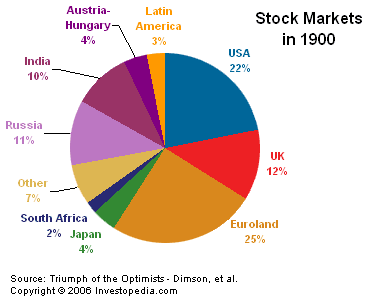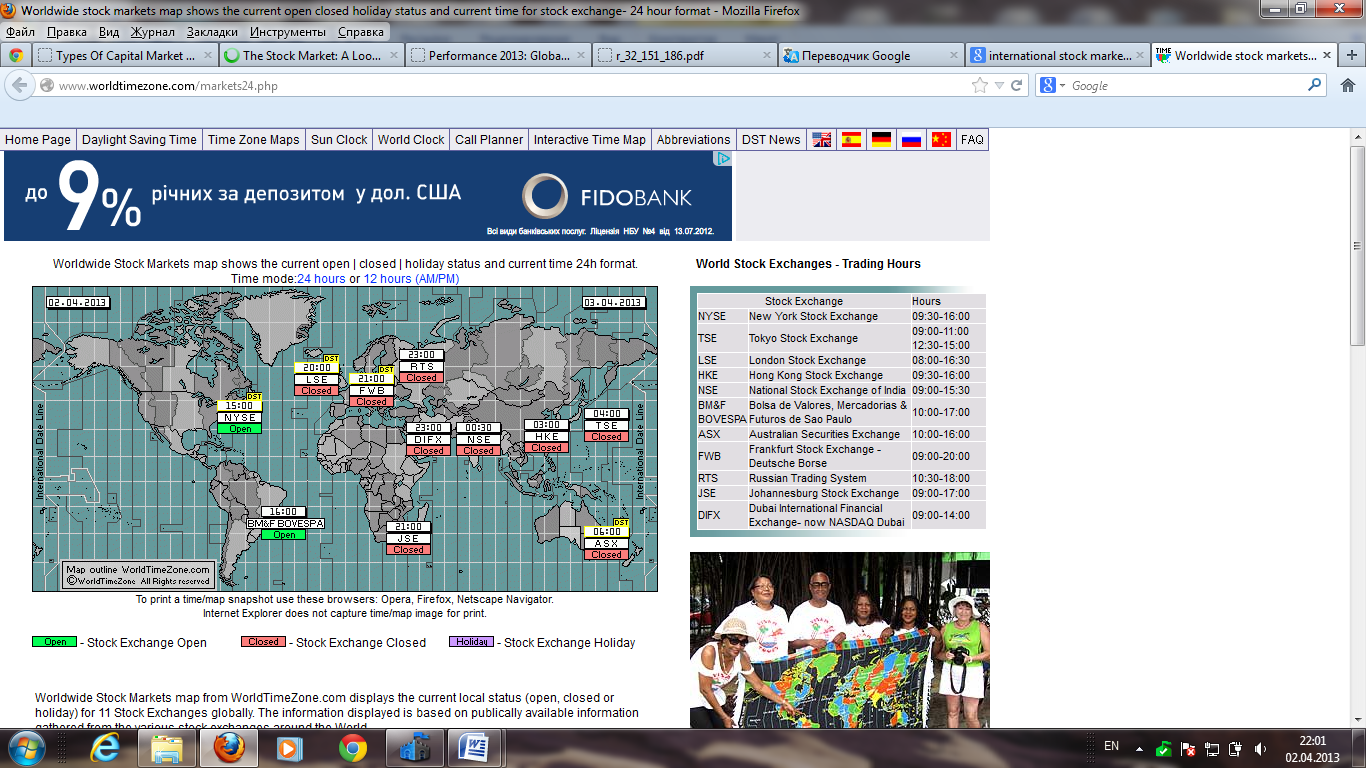
Theme 10. International securities market
1. Types of capital market securities.
2. Stock exchange.
3. International Securities Markets Regulation
1. Types of capital market securities.
The two main types of are stocks (Common Stocks and Preference Shares or Preferred stocks) and bonds (Debt Instruments). Traded in separate markets, companies, corporations and governments use them to raise funds for various purposes. These funds are raised for long terms and are the regulatory to supervise the capital market securities and their respective market in every country.
Debt Instruments
A debt instrument is used by either companies or governments to generate funds for capital-intensive projects. It can obtained either through the primary or secondary market. The relationship in this form of instrument ownership is that of a borrower – creditor and thus, does not necessarily imply ownership in the business of the borrower. The contract is for a specific duration and interest is paid at specified periods as stated in the trust deed* (contract agreement). The principal sum invested, is therefore repaid at the expiration of the contract period with interest either paid quarterly, semi-annually or annually. The interest stated in the trust deed may be either fixed or flexible. The tenure of this category ranges from 3 to 25 years. Investment in this instrument is, most times, risk-free and therefore yields lower returns when compared to other instruments traded in the capital market. Investors in this category get top priority in the event of liquidation of a company.
When the instrument is issued by:
The Federal Government, it is called a Sovereign Bond;
A state government it is called a State Bond;
A local government, it is called a Municipal Bond; and
A corporate body (Company), it is called a Debenture, Industrial Loan or Corporate Bond
Stocks
Another type of capital market security is known as stocks. These are favored by the investors as they can get huge returns from this capital market instrument. The estimated size of the global stock market is evaluated to be around $45 trillion. Used for trading of company stocks, companies and governments use it to raise funds for different purposes.
There exists every kind of investor in the capital market, both the individual investors and the institutional investors. Today, the market trend has completely changed and is mainly dominated by the institutions, which are increasing the volume of the market. Hence it’s very important for the investor to take proper care while selecting capital market securities, as the risk factor related to these securities are different.A proper research should be done before any investment.
Equities (also called Common Stock)
This instrument is issued by companies only and can also be obtained either in the primary market or the secondary market. Investment in this form of business translates to ownership of the business as the contract stands in perpetuity unless sold to another investor in the secondary market. The investor therefore possesses certain rights and privileges (such as to vote and hold position) in the company. Whereas the investor in debts may be entitled to interest which must be paid, the equity holder receives dividends which may or may not be declared.
The risk factor in this instrument is high and thus yields a higher return (when successful). Holders of this instrument however rank bottom on the scale of preference in the event of liquidation of a company as they are considered owners of the company.
Preference Shares
This instrument is issued by corporate bodies and the investors rank second (after bond holders) on the scale of preference when a company goes under. The instrument possesses the characteristics of equity in the sense that when the authorised share capital and paid up capital are being calculated, they are added to equity capital to arrive at the total. Preference shares can also be treated as a debt instrument as they do not confer voting rights on its holders and have a dividend payment that is structured like interest (coupon) paid for bonds issues.
Preference shares may be:
Irredeemable, convertible: in this case, upon maturity of the instrument, the principal sum being returned to the investor is converted to equities even though dividends (interest) had earlier been paid.
Irredeemable, non-convertible: here, the holder can only sell his holding in the secondary market as the contract will always be rolled over upon maturity. The instrument will also not be converted to equities.
Redeemable: here the principal sum is repaid at the end of a specified period. In this case it is treated strictly as a debt instrument.
The graphs below show a breakdown of the world markets in both 1900 and 2000 and the anomalous growth of the U.S. market during this time.


W orldwide
Stock Markets map shows the current open | closed | holiday status
and current time
24h format. Time mode:24
hours or 12
hours (AM/PM)
orldwide
Stock Markets map shows the current open | closed | holiday status
and current time
24h format. Time mode:24
hours or 12
hours (AM/PM)
